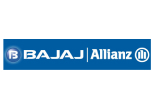Know Everything About Tax Exemptions Under A Money Back Plan
Table of Contents
Every year on April 1st, the tax-saving season begins for both paid and non-salaried persons. As a knowledgeable investor, you should seek out tax-saving assets that allow you to not only save money but also generate money without paying taxes. There are a slew of innovative methods to save money on taxes and increase your savings potential. Tax preparation, on the other hand, is something that most people postpone until later. Starting investing in the early quarters of the fiscal year, when there is still time to plan ahead of time and reap the benefits of various tax-saving measures, is a preferable strategy.
How Can Money Back Plans Assist You in Exempting Taxes?
The Indian government gives many tax exemptions and deductions on the promised savings plan under the Income Tax Act of 1961. When filing a tax return, the taxpayer can claim these deductions. Deductions are removed from gross income, and tax is calculated at the applicable rate on the net income. If you are a knowledgeable and active tax planner, you will understand how these deductions are computed, and you will be able to plan your investment objectives and adjust those plans to achieve the goal of tax savings.
Money Back Plans are another tax-advantaged investment that not only saves money on taxes but also allows investors to earn big profits over time. Unlike prior generations of Money Back provided by insurance companies, the current generation of Money Back does not include premium allocation or administrative charges, resulting in higher returns for investors.
Furthermore, by combining the benefits of insurance and investment, one can profit from the income taxability of the premium paid toward the policy under Income Tax Act Section 80C. Investment returns are also excluded from taxation under Section 10(10D) of the IT Act.
Money Back plans include a five-year lock-in term and allow members to invest whenever they choose. Investing flexibility also benefits investors because they have a large variety of fund alternatives to pick from. Money Back also allows for three to four free transfers across funds every year. In addition, Money Back Plans allow for three to four free transfers across funds each year. Despite the fact that ULIPs are a lucrative tax-saving investment option, Money Back's rewards are totally contingent on the fund's market success.
Conclusion
The Income Tax Act of 1961 has three primary provisions that provide tax advantages. The portions accessible are 80C, 80D, and 10(10D). The highest deduction available under section 80C is Rs 150,000. Under section 80D, a general deduction of Rs 25,000 is available. The additional deduction is Rs 25,000 if they are less than 60 years old. Despite this, the majority of taxpayers wait until the fourth quarter to file their taxes, forcing them to make difficult decisions. If a person begins preparing for tax-saving investments at the start of the fiscal year, the amount invested can rise over time, assisting the individual in meeting their long-term financial goals.These tips might assist taxpayers in managing their annual tax savings and making judicious investments in tax-saving equipment.
Also read - Money Back Or ULIPs? Which Is Better?
Disclaimer: This article is issued in the general public interest and meant for general information purposes only. Readers are advised not to rely on the contents of the article as conclusive in nature and should research further or consult an expert in this regard.



























































